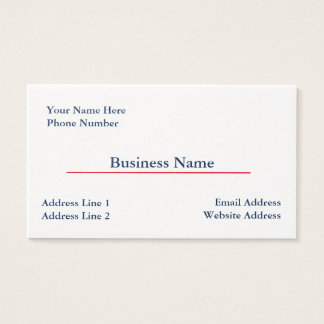Gusto is an HR and payroll management platform designed for SMEs. Beginning life as a fledgeling startup in 2011, the company is now a unicorn (valued at over 1 billion USD).
In this case study, the steps that Gusto took on its meteoric rise are documented. Whether you own an e-commerce business, a services business or a software company like Gusto, there are many invaluable lessons you can take from this case study to generate amazing results in your business.
Build the Right Product for the Right Market
It’s important to emphasize that no amount of marketing wizardry will enable you to build an enormously profitable company without a great product.
Even if you can persuade people to join your service through compelling copywriting and incentives, you’ll never retain your customers if you aren’t delivering real value.
Having owned previous businesses, the three co-founders all experienced frustrations with existing payroll systems.
Given that approximately 50% of 6 million small businesses in the US were managing their payrolls with paper or spreadsheets, this represented a huge pain point that the Gusto founders would seek to resolve.
Problem solving at scale is the key to business success. If you can find a market with a common pain point that isn’t being adequately addressed, this is a great premise for a startup.
Track Metrics and Solicit Customer Feedback
In addition to building an amazing, easy-to-use product, Gusto kept a keen eye on acquisition costs and remained in constant communications with its customers while scaling.
Many SaaS businesses have fallen into trouble after pursuing explosive top-line growth without a plan for sustainable future.
The marketing team at Gusto tracked their KPIs to ensure they weren’t overpaying to acquire new customers. This still enabled them to grow fast but in a way that’s healthy rather than dangerous.
By deploying regular customer satisfaction surveys, it was possible to prevent problems that could result in churn.
Never assume that you’re delivering value. Always stay in touch with your customers to ensure that they’re satisfied – this is crucial for maintaining a good retention rate.
Find the Right Early Adopters
Gusto gained initial momentum thanks to word of mouth marketing by existing customers as well as promotion from the company’s famous investors.
To take things to the next level, Gusto focused in on a particular customer segment: accountants. Because accountants were known to recommend payroll software to small business owners, bringing as many of them onboard as possible would lead to explosive growth – and it did.
Is there a subset of your customer base that are proven to refer their friends and associates? You may want to make it a priority to acquire them.
In a totally unrelated niche, Tinder headed to college campuses to find local VIPS, sorority leaders and minor celebrities to acquire as early adopters for the now immensely popular mobile dating app. Given that online dating had a reputation for attracting lonely people, finding attractive early adopters was essential in bringing new users onboard.
Make Referrals Easy
If you want your existing customers to bring customers to your business, it’s important to make referrals as easy as humanly possible.
Gusto’s referral program is simple and effective. With one click of a button, you can recommend Gusto to friends at other companies. You can also import your own contact list and there are numerous points in the product where users can send out referrals.
Educate Your Audience
56% of small business owners expect to drive profits by improving their existing customer experience and retention. One of the best ways to do this is with content marketing.
Gusto managed to attract new users and keep its existing users engaged through its content library of educational blog posts. By teaching small business owners practical lessons about payroll management, culture building and HR, readers would keep returning to the content library time and time again.
Another SaaS business with an amazing content library is Shopify. With regular blog posts and podcast episodes about every single aspect of internet marketing and entrepreneurship, Shopify delivers the comprehensive educational resources to ensure store owners remain profitable (and therefore, remain customers of Shopify).
Survey your audience and find out about their pain points, values and ambitions. This information is useful for you to create blog content that resonates with your core buyers.
Optimize for Mobile
In 2016, mobile internet usage exceeded desktop for the first time ever. If you’re not optimizing your website, marketing and user experience for mobile users, you’re shooting yourself in the foot.
Gusto found this out the hard way, sending PPC traffic to a landing page for a gated quiz. After seeing a high initial bounce rate, the landing page was optimized for mobile users and a 81% improvement in opt-in rate was achieved.
Unconventional Tactics Also Work
Gusto’s marketing is nothing out of the ordinary, using proven tactics like content marketing, PPC advertising, referral programs and so forth. However, some unconventional tactics were used to.
Unconventional tactics should never be the foundation of your marketing strategy, but they can be a great supplement.
Gusto gained exposure with branded street furniture and billboard advertising.
Also, one of the co-founders took a tour of the US in a branded RV to give $1,500 to 10 customers that they could donate to the charity of their choice. This received immense publicity and helped to raise awareness for the brand.
15% Off All Business Cards
VIEW ALL
$23.25
$60.05
$60.05

$44.25
$44.25
$58.55
$68.95
$65.40
$60.05







No comments:
Post a Comment